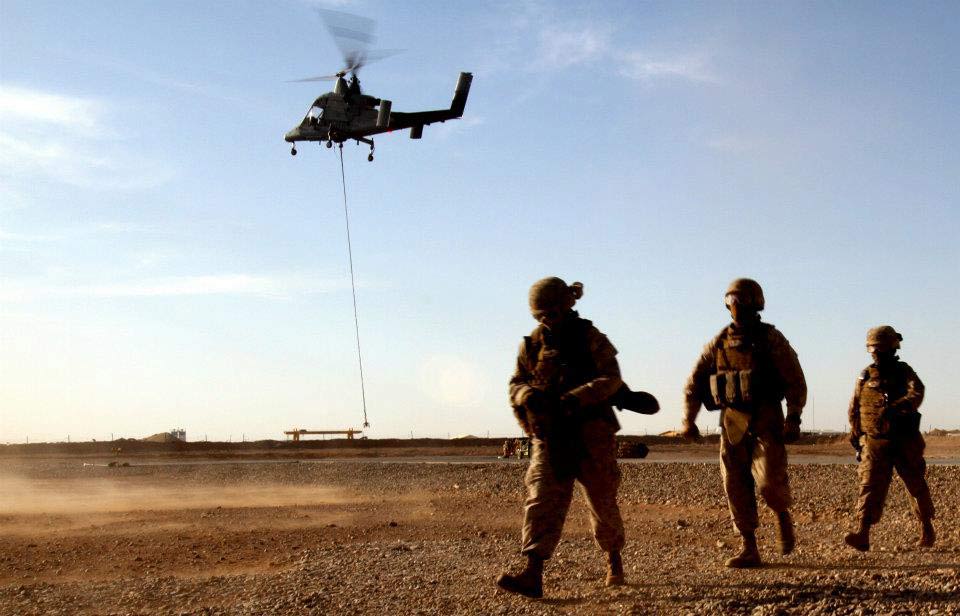Robot Helicopter's 1st 'Hot Hookup' Makes Military History

A robot helicopter has hauled more than 1 million pounds of cargo for the U.S. Marine Corps in less than half a year of testing, but nobody had ever tried hooking cargo to the unmanned helicopter as it hovered in midair. Marines finally made aviation history by completing what's known as a "hot hookup" in Afghanistan last week.
That hot hookup success means the Kaman K1200 "K-MAX" helicopter can swoop in to grab military gear without bothering to land. A Marine unmanned squadron moved almost 6,000 pounds of gear with the drone helicopter to Marines in hard-to-reach locations on the first night of such testing (May 22), according to Lisa Tourtelot, a U.S. Marine corporal with the 3rd Marine Aircraft Wing.
"It takes time and requires more personnel to operate," said John Norton, a U.S. Marine major in charge of cargo resupply with Marine Unmanned Aerial Vehicle Squadron 2 (called the "Night Owls"). "With a hot hookup from the hover, we're able to come into the zone more expeditiously, which gives us more time to go forward with the fuel supply on the aircraft."
The K-MAX helicopter previously worked in the Pacific Northwest's logging industry before undergoing battlefield testing. Its recent hot hookup test included Marines with Combat Logistics Battalion 5 (CLB-5) — no strangers to external cargo hookups.
"Usually when we're working with a manned aircraft we have pilots…and crew chiefs to look up to when we're underneath the helicopter," said Brianna Conte, a U.S. Marine sergeant and landing support team leader with CLB-5. "With unmanned, it's not like that. We have the [air vehicle operator] and a spotter who are our eyes when we're getting it all hooked up."
Such operations could eventually eliminate with the need to have a human operator controlling the unmanned helicopter. The U.S. Office of Naval Research has worked on turning the K-MAX into a fully autonomous robotic helicopter that can deliver cargo to Marines anywhere, in any weather — Marines would just need to order supplies using a device similar to an iPad or Android tablet.
This story was provided by InnovationNewsDaily, a sister site to LiveScience. Follow InnovationNewsDaily on Twitter @News_Innovation, or on Facebook.
Get the world’s most fascinating discoveries delivered straight to your inbox.




